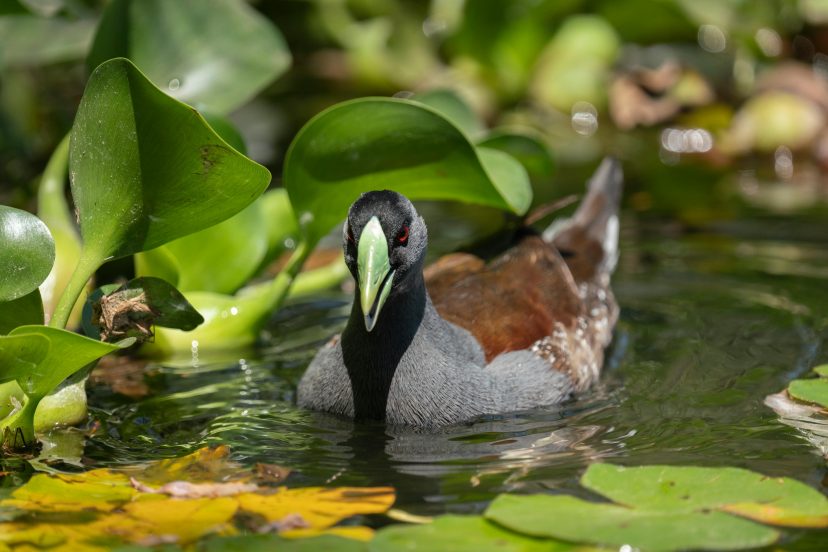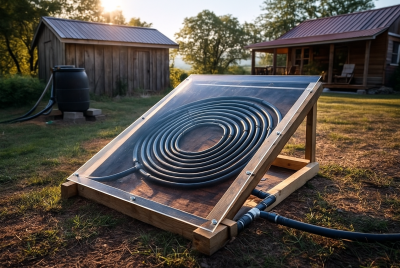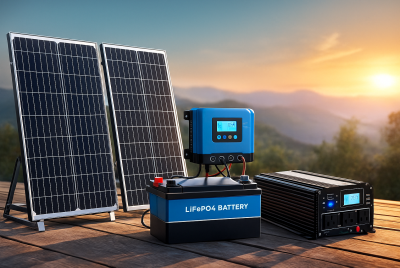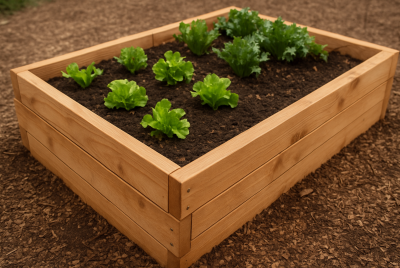How to Create a Wildlife Pond: 10 Eco-Friendly Design Tips
We may earn a commission for purchases made using our links. Please see our disclosure to learn more.
Have you ever wanted your backyard to feel alive with frogs, dragonflies, and birds? Learning how to create a wildlife pond is one of the easiest ways to invite nature closer. Many ponds are built just for looks, but they often fail wildlife. That means birds go thirsty, frogs lack shelter, and pollinators miss out. By using eco-friendly design, you can build a pond that’s beautiful, balanced, and full of life.
Why Build a Wildlife Pond?
A wildlife pond isn’t just a pretty addition to your garden — it’s a miniature ecosystem. Research published in Biological Conservation shows that even small ponds support more biodiversity than many streams and rivers. They provide habitats for frogs, newts, birds, insects, and pollinators, all of which play key roles in the environment.
For you, the benefits are just as meaningful. If you’ve ever wondered how to create a wildlife pond that also improves your own well-being, science has the answer. Studies in the Journal of Environmental Psychology reveal that natural water features help reduce stress, lower blood pressure, and improve overall well-being. Imagine sipping tea in your garden while butterflies rest on pond plants and birds splash in the shallows. That’s the calming magic of a wildlife pond.
10 Eco-Friendly Design Tips for a Wildlife Pond
1. Choose a Sunny Yet Partly Shaded Location
Aquatic plants rely on sunlight to oxygenate the water while also providing food and shelter. Ideally, your pond should get at least six hours of sunlight per day. However, avoid full, unbroken sun; a bit of shade from adjacent bushes or trees keeps the water from scorching and limits algae growth.
2. Create Natural, Irregular Shapes
Skip the perfectly round or rectangular designs. Nature rarely follows straight lines, and animals favors edges that feel natural. Curved or kidney-shaped ponds not only seem more natural, but also provide a variety of ecosystems along their edge. A smooth, uneven form attracts more frogs, insects, and birds than a sharp geometric pool.
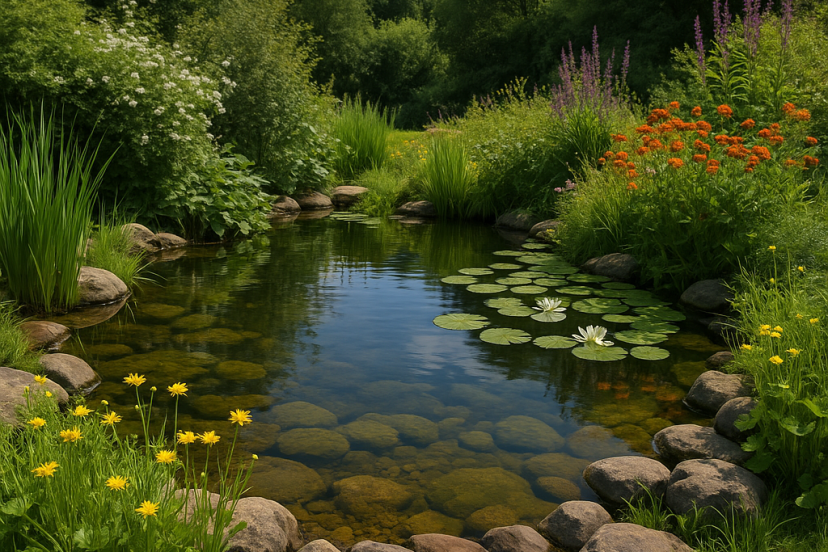
3. Vary the Pond Depth
A successful wildlife pond isn’t the same depth throughout. Create shallow “shelves” around the edge for marginal plants and insects, with gradual slopes that allow animals to wade in and out. Add deeper sections, around 18–24 inches, where amphibians can shelter and overwinter. This mix of depths supports a wider range of creatures year-round.
4. Use Eco-Friendly Liners
When sealing your pond, avoid thin plastic liners that degrade quickly. Instead, consider clay, which has been used for centuries to hold water naturally. If clay isn’t practical, durable EPDM (ethylene propylene diene monomer) liners are a longer-lasting, eco-friendlier choice. They’re flexible, resistant to punctures, and safe for wildlife.
5. Add Native Aquatic Plants
Plants are the lifeblood of a healthy pond. They oxygenate the water, provide shelter, and attract pollinators. Focus on native species for the best results:
- Oxygenators like hornwort keep water fresh and breathable.
- Marginal plants such as marsh marigold thrive along shallow shelves.
- Floating plants like water lilies shade the water and create cover for amphibians.
By planting a mix, you’ll achieve balance and prevent algae from dominating.
6. Build Gentle Slopes and Ramps
Accessibility is key for wildlife. Frogs, hedgehogs, and birds need gentle edges where they can safely drink, bathe, or climb out. Pebble beaches, shallow ledges, or small log ramps are simple solutions. This also makes the pond safer for children and pets, reducing the risk of accidents.
7. Incorporate Logs, Stones, and Leaf Piles
A pond doesn’t exist in isolation — it’s part of a wider habitat. Place logs, flat stones, and piles of leaves around the edges to create shelter and basking areas. Dragonflies love sunning themselves on rocks, while toads and beetles will hide under logs. These features give your pond character and encourage a wider variety of visitors.
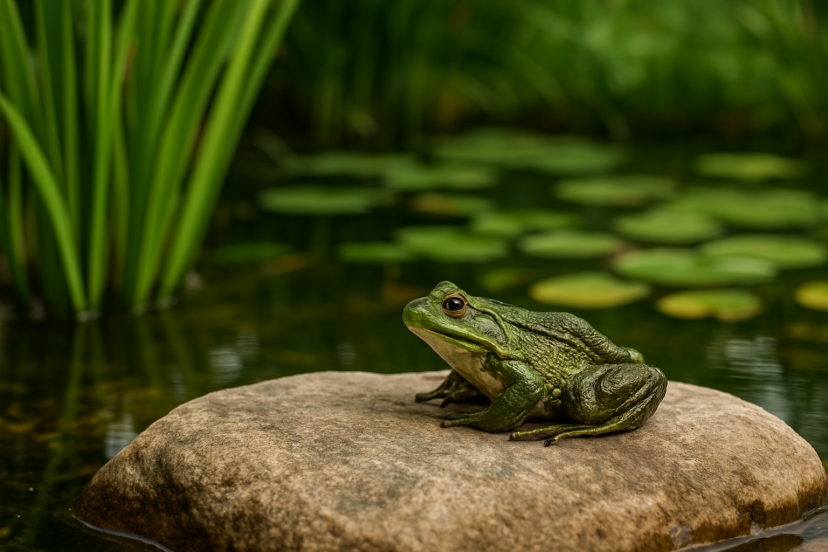
8. Avoid Chemicals
Skip chlorine, fertilizers, or pesticides. Chemicals disrupt the delicate balance of pond ecosystems, killing the very creatures you want to attract. Instead, rely on plants and natural predators to control pests. For example, frogs will keep mosquitoes in check, while barley straw pellets can naturally limit algae growth.
9. Use Solar Pumps or Fountains
Movement helps oxygenate water and prevents stagnation, but you don’t need energy-guzzling pumps. Solar-powered pumps and fountains provide gentle circulation while staying eco-friendly. They’re also simple to install and cost nothing to run. A bubbling fountain not only benefits wildlife but adds soothing sound to your garden.
10. Maintain Seasonally with a Light Touch
A wildlife pond should largely take care of itself, but a little seasonal care goes a long way. In autumn, skim off fallen leaves to prevent decay. In summer, top up water levels with collected rainwater, trim back plants, and slip on your trusted gardening boots to handle light maintenance comfortably. Trim plants when they spread too far, but resist the urge to over-clean — a bit of natural debris is essential for pond life.
Eco-Friendly Pond Gear Worth Checking Out
Here are five useful tools to help you get started:
- Firestone PondGard 45 Mil EPDM Liner – Long-lasting, flexible, and wildlife-safe.
- Live Aquatic Plant Starter Pack – A mix of oxygenators, marginals, and floaters.
- Solar Fountain Pump Kit – Energy-free way to keep water moving.
- Protective Pond Netting – Stops excess debris while letting wildlife access the pond.
- The Wildlife Pond Book by Jules Howard – A practical, research-backed guide for beginners.
Practical Tips for Long-Term Care
- Autumn: Remove excess leaves and debris.
- Winter: Keep a small hole in ice to allow oxygen exchange.
- Spring: Check for new plant growth and divide crowded species.
- Summer: Add rainwater when levels drop and trim back vigorous plants.
By staying attentive each season, you’ll ensure your pond remains healthy and welcoming.
Conclusion
Learning how to create a wildlife pond is about more than digging a hole and filling it with water. It’s about designing an ecosystem where life can thrive naturally. By following these 10 eco-friendly tips — from choosing native plants to using solar fountains — you’ll create a pond that looks stunning and supports the environment. Start small, stay patient, and let nature take the lead. Soon enough, your backyard will be buzzing, splashing, and singing with new life.
FAQs
What is the best location for a wildlife pond?
Choose a sunny spot with partial shade, away from large trees that drop leaves.
What is the ideal depth for a wildlife pond?
A mix of shallow shelves and deeper zones around 18–24 inches is ideal.
Should I install a pump or filter in a wildlife pond?
Not always. When you know how to create a wildlife pond with the right plants, they naturally keep the water balanced. With the right plants, your pond can stay balanced naturally.
Which plants are easiest for beginners?
Hornwort, marsh marigold, and water lilies are low-maintenance and effective.
How can I control mosquitoes?
Encourage frogs, dragonflies, and fish, which feed on mosquito larvae.

